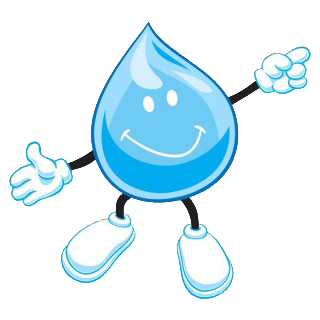The Kalamazoo Water Pumping Stations add small amounts of chlorine for disinfection, fluoride to keep your teeth healthy and a phosphate to help control iron and provide corrosion control in the water pipes.
-Henry the Water Drop

Henry Says
Groundwater is pumped from aquifers by means of wells at several separate wellfields in the City of Kalamazoo- Protect Your Water water system. At the wellfields, groundwater is pumped from individual wells and into water main pipes located underground. Then, booster pumps boost the water pressure, sending it out into the water distribution system.
The water distribution system is a large grid of water main pipes buried underground, usually running under the streets. Fire hydrants and water storage tanks are also part of this distribution system and serve important functions. Obviously, fire hydrants are used to extinguish fires, but they also serve to clean out sediments from water mains and to test flow capabilities. Above groundwater storage tanks serve as emergency water storage for power outages and fire-fighting but also provide appropriate pressure in the water distribution system.
Water services are attached to the water main and run into buildings and houses, carrying water from the water distribution system into your home or business. Many of you have seen or know where your water meter is located. This water meter (usually located in the basement) is connected to the water service and records the amount of water that flows through the water service into your home or business.
Kalamazoo Water System Facts
- Second largest groundwater-based drinking water system in Michigan
- 17 Wellfields/16 Water Pumping Stations (WPSs)
- 98 Production Wells
- 53 Water Facilities
- 11 Pressure Service Districts
- 9 Water Storage Facilities
- 827 Miles of Water Main
- 6057 Fire Hydrants
- 120 Square Mile Service District
- 190,000 Population Served
Water Produced in 2019
- Total: 6.7 billion gallons
- Average Day: 20 million gallons
- Maximum Day: 46.7 million gallons
Limited Treatment Feed
- Chlorine: average 2.12 ppm (chlorine treatment began in 1941)
- Fluoride: average 0.44 ppm (fluoride treatment began in 1951)
- Polyphosphate: average 1.82 ppm (phosphate treatment began in 1956)
- Air Stripping for VOC (volatile organic compounds) Removal at 2 WPSs (air stripping began in 1990)
